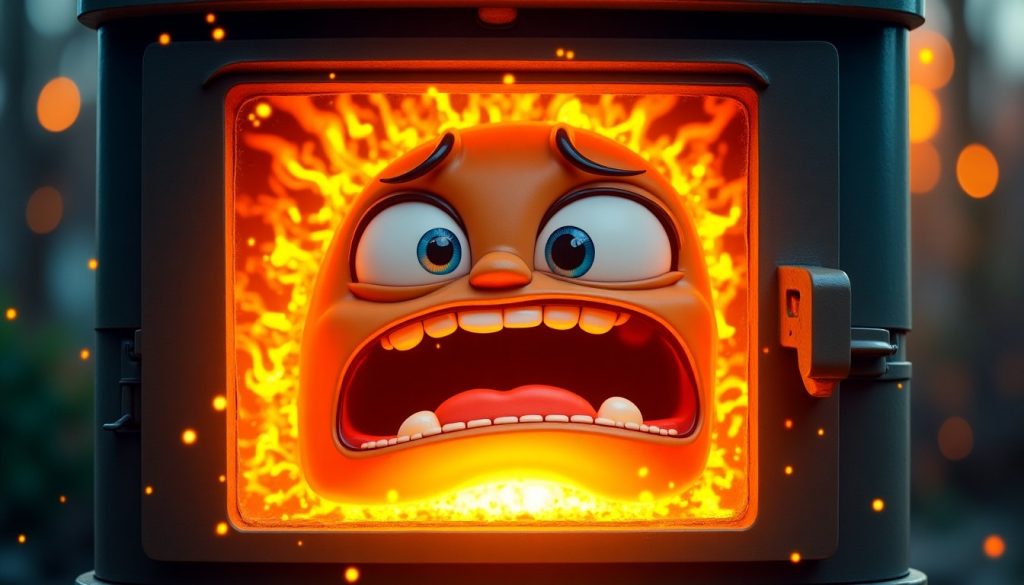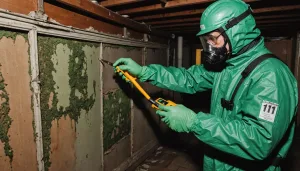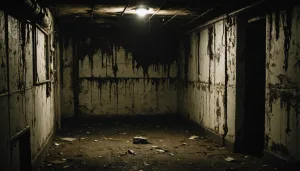Your furnace is the heartbeat of your home’s heating system, operating quietly and efficiently when properly maintained. However, one of the key indicators that your furnace may require immediate repair is when it starts producing unusual noises. Familiarizing yourself with the different sounds your furnace can make and understanding their possible causes can greatly enhance home safety and prevent costly repairs down the line.
Rattling, popping, screeching, or banging noises are not normal and suggest that something is amiss. Each type of noise can be attributed to specific problems within the furnace system. Let’s break down what each sound could mean and how it might affect your HVAC system:
| Noise Type | Possible Cause | Potential Risk |
| Rattling | Loose parts or debris in the blower motor | Reduced efficiency or further component damage |
| Popping | Ductwork expanding and contracting | Minor structural damage over time |
| Screeching | Worn or slipped blower belt | Failure of the blower motor |
| Banging | Ignition delay leading to gas build-up | Potential risk of a gas explosion |
Addressing these noises promptly is vital. A rattling noise might simply call for a bit of tightening, but screeches could mean it’s time to replace a blower belt. Popping sounds are often less alarming, indicating expansion in the duct work, yet they should still be evaluated to ensure no related damage occurs. Most concerning are banging noises, which could signify delayed ignition—a situation where unburned fuel builds up and ignites all at once, presenting a serious safety risk.
A professional HVAC technician can diagnose these sounds accurately and offer solutions to restore tranquility and efficiency to your heating system. By doing so, not only can you maintain home safety by handling potentially hazardous situations, but you also enhance your system’s longevity and performance.
If you notice unusual noises emanating from your furnace, take them as early warning signals. Scheduling a maintenance appointment can help you catch minor issues before they evolve into significant problems that could compromise the safety and comfort of your home.
inconsistent heating
When your furnace distributes heat inconsistently throughout your home, it can pose a considerable challenge, especially during the colder months when reliable heating is crucial. Understanding the common issues that lead to uneven heating can help you pinpoint whether your furnace requires immediate attention from an HVAC professional. Here’s a step-by-step guide to identifying and potentially rectifying the issue:
- Check the Thermostat Settings: The first step is to ensure your thermostat is set to the correct temperature and mode. Often, a simple adjustment can solve inconsistencies. Make sure your thermostat is in “heat” mode and the fan setting is on “auto,” not “on,” as this can affect airflow distribution.
- Examine Air Vents and Filters: Blocked air vents or dirty air filters are common culprits of uneven heating. Remove any obstructions like furniture or curtains from the vents. Next, inspect the air filter; if it’s clogged, replace it immediately to ensure optimal airflow and system efficiency.
- Inspect Ductwork for Leaks: Leaky ductwork can lead to heat loss on its way to the intended rooms, resulting in cold spots around your home. Examine exposed ductwork for visible damage or separations. Sealing these leaks with appropriate HVAC tape or contacting a professional for more extensive repairs can make a significant difference.
- Check Room Insulation: Variations in room temperature can also stem from differing insulation levels. Assess the insulation quality in colder rooms, particularly around windows and doors, and add weatherstripping or additional insulation where necessary.
- Evaluate Zoning and System Capacity: If only specific areas of your home are consistently colder, a zoning issue might be to blame. Homes with complex zones may benefit from additional dampers or zone-specific thermostats. Similarly, a furnace that’s too small or too large for your home can struggle to maintain consistent temperatures. Having an HVAC expert evaluate your system’s capacity can clarify whether upgrading or recalibrating your system is necessary.
Persistent inconsistent heating issues may indicate a problem that goes beyond simple fixes. In such cases, consulting with a certified HVAC technician is imperative. They can conduct a comprehensive assessment of your heating system’s performance and diagnose any underlying mechanical issues that might be disrupting consistent heat distribution. By addressing these concerns promptly, you can not only enhance home safety and comfort but also improve energy efficiency, potentially reducing your heating costs.
frequent cycling
When your furnace begins to cycle on and off more frequently than usual, it’s not just a minor inconvenience—it could be a sign that something is wrong with your system, requiring immediate attention. Frequent cycling, also known as short cycling, can not only disrupt the comfort of your home but also lead to increased wear and tear on your unit, ultimately shortening its lifespan. Understanding the potential causes of short cycling can help identify when professional HVAC assistance is necessary.
One common cause of short cycling is an improperly sized furnace. If your furnace is too large for your home, it will heat the space too quickly, causing the system to shut off and then restart shortly after. Conversely, an undersized furnace will hard-pressed to maintain the desired temperature, leading to the opposite cycle. Both scenarios can lead to inefficiency and potential damage over time, emphasizing the importance of consulting an HVAC professional to ensure your system is correctly sized and calibrated for your home’s needs.
Another potential culprit is a dirty or clogged air filter. When filters are not regularly cleaned or replaced, airflow is restricted, causing the furnace to overheat and shut down to prevent damage. This overheating triggers the cycling process, as the system will attempt to restart once it cools down. Regular maintenance and timely filter replacements are crucial steps in preventing short cycling due to airflow restrictions.
Thermostat issues may also be to blame for frequent cycling. If a thermostat is malfunctioning or placed in an unsuitable location, such as near a heat source or in direct sunlight, it may misread your home’s temperature and cause the furnace to cycle on and off unnecessarily. Ensuring that your thermostat is functioning correctly and ideally positioned can alleviate this problem, maintaining both home safety and heating efficiency.
Lastly, any issues with your furnace’s heat exchanger or ignition system could prompt short cycling. A failing heat exchanger may not regulate temperature effectively, causing the cycle to repeat, while ignition problems can prevent the furnace from maintaining a continuous fuel burn. Both issues require the expertise of a qualified HVAC technician to accurately diagnose and resolve.
Addressing frequent cycling not only enhances the comfort and safety of your home but also extends the lifespan of your furnace while potentially lowering your energy bills. Proactively identifying and addressing these issues with professional help ensures that your heating system operates at peak performance, promoting both immediate comfort and long-term efficiency.
rising energy bills
If you’ve noticed a sudden increase in your energy bills without a corresponding change in your usage habits, it may be time to investigate your furnace. A sudden rise in heating costs can often indicate that your furnace is working harder than it should be, which may be due to several underlying issues. Recognizing these signs and addressing them with the help of an HVAC professional can ensure that your system operates efficiently and safely.
One common cause of rising energy bills is decreased efficiency in your furnace’s components. Over time, essential parts like burners, heat exchangers, and blower motors can wear out or become clogged with dust and debris, reducing their effectiveness. When these components aren’t functioning optimally, your furnace must consume more energy to produce the same amount of heat, leading to higher utility bills. Regular maintenance and cleaning of these components can help maintain their efficiency and prevent unnecessary energy consumption.
Similarly, aging equipment can also lead to increased energy consumption. Older furnaces may not be able to deliver the same level of efficiency as newer models due to technological advancements. If your furnace is more than 15 to 20 years old, it might be nearing the end of its lifecycle, causing it to work harder to heat your home. Upgrading to a modern, energy-efficient model could be a wise investment, reducing your energy costs and improving home safety by ensuring your system meets current safety standards.
Inadequate insulation or poor ductwork can also contribute to rising energy bills. If your home’s insulation is insufficient, or if there are leaks in the ductwork, the heat produced by the furnace may escape before reaching the desired areas. This heat loss forces your furnace to operate longer and more frequently to compensate for the loss, consuming more energy in the process. Sealing ductwork and upgrading insulation can improve energy efficiency, reduce costs, and enhance overall heating effectiveness.
Faulty thermostat settings or malfunctioning components can trigger the furnace to run more frequently than necessary, consuming excess energy. Ensure your thermostat is correctly calibrated and not placed in an area that can falsely influence its readings, such as near windows or heat sources. A programmable thermostat can help optimize your heating schedule, ensuring energy is used only when needed and reducing unnecessary furnace operation.
Given the potential causes of rising energy expenses, consulting with an HVAC specialist is recommended to conduct a thorough evaluation of your system. They can identify inefficiencies, suggest necessary repairs or upgrades, and offer energy-saving advice tailored to your home’s specific needs. Addressing these issues promptly not only protects your wallet but also contributes to a greener, more sustainable home by reducing energy waste.
yellow pilot light
A yellow pilot light is another critical indicator that your furnace may need immediate attention. The pilot light, which ignites the burners in a gas furnace, should typically be a crisp blue color, indicating that the gas is burning cleanly and efficiently. A yellow or flickering flame can suggest several concerns that should be addressed to maintain proper heating and ensure home safety.
The most common reason for a yellow pilot light is incomplete combustion caused by a lack of sufficient air mixing with the gas. This situation often results from dirty burners or a clogged pilot orifice. When the pilot light burns yellow, it may produce more carbon monoxide, a colorless and odorless gas that is extremely hazardous to your health. Ensuring that your pilot light is burning correctly is vital not only for efficiency but also as a matter of home safety.
Another possibility is that the gas supply is not reaching the pilot light adequately, which may indicate issues with the gas pressure regulator or supply lines. In some cases, this could also be due to a misaligned pilot light, where the tip of the orifice is not positioned correctly, causing impaired ignition and a change in flame color. These issues necessitate a thorough inspection by an HVAC professional to prevent further complications and ensure optimal furnace performance.
Both of these scenarios, whether related to air intake or gas supply issues, can be more accurately diagnosed and resolved by a qualified technician. Regular maintenance checks are essential to prevent such issues from escalating, helping to sustain efficient heating and minimize risks associated with malfunctioning equipment.
It’s worth noting that environmental factors, such as a drafty location or nearby airflow disturbances, can also cause a flickering pilot light. Shielding the pilot light from drafts or repositioning any nearby fans may help stabilize the flame. However, if these simple fixes do not resolve the issue, professional evaluation becomes necessary.
Homeowners should never ignore a yellow pilot light due to the potential risks involved. If noticed, it would be prudent to have it checked immediately to secure your home’s heating functionality and safety. By keeping the pilot light in proper working order, you can ensure that your heating system runs at peak efficiency while safeguarding your family’s well-being.
In conclusion, maintaining a well-functioning furnace is essential to keeping your home safe, comfortable, and energy-efficient. Recognizing the signs that indicate your furnace needs immediate repair, such as unusual noises, inconsistent heating, frequent cycling, rising energy bills, and a yellow pilot light, allows you to address issues promptly. By partnering with a professional HVAC technician, you can ensure that your heating system operates smoothly, ultimately saving on costly repairs and contributing to a safer and more cozy home environment.





